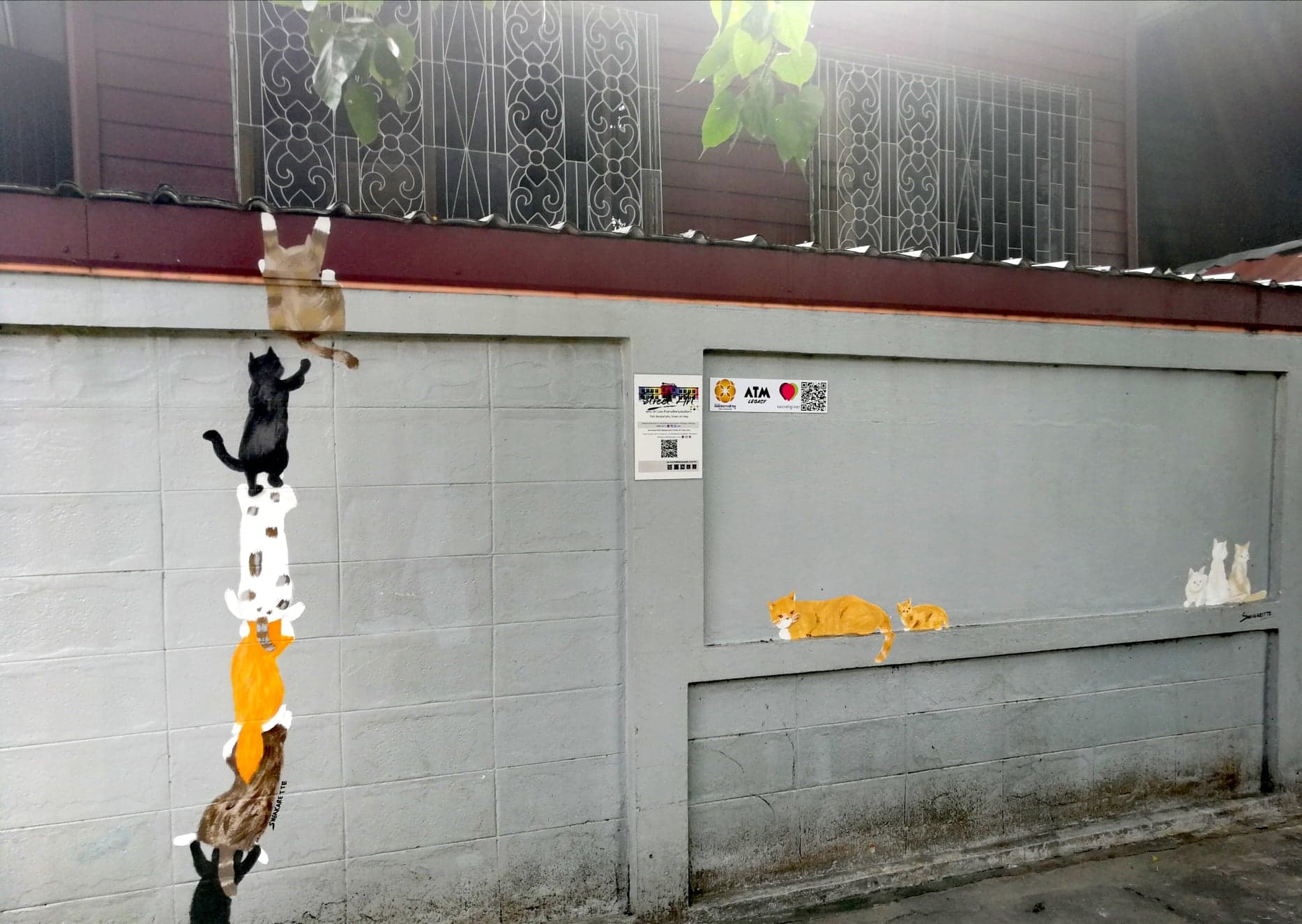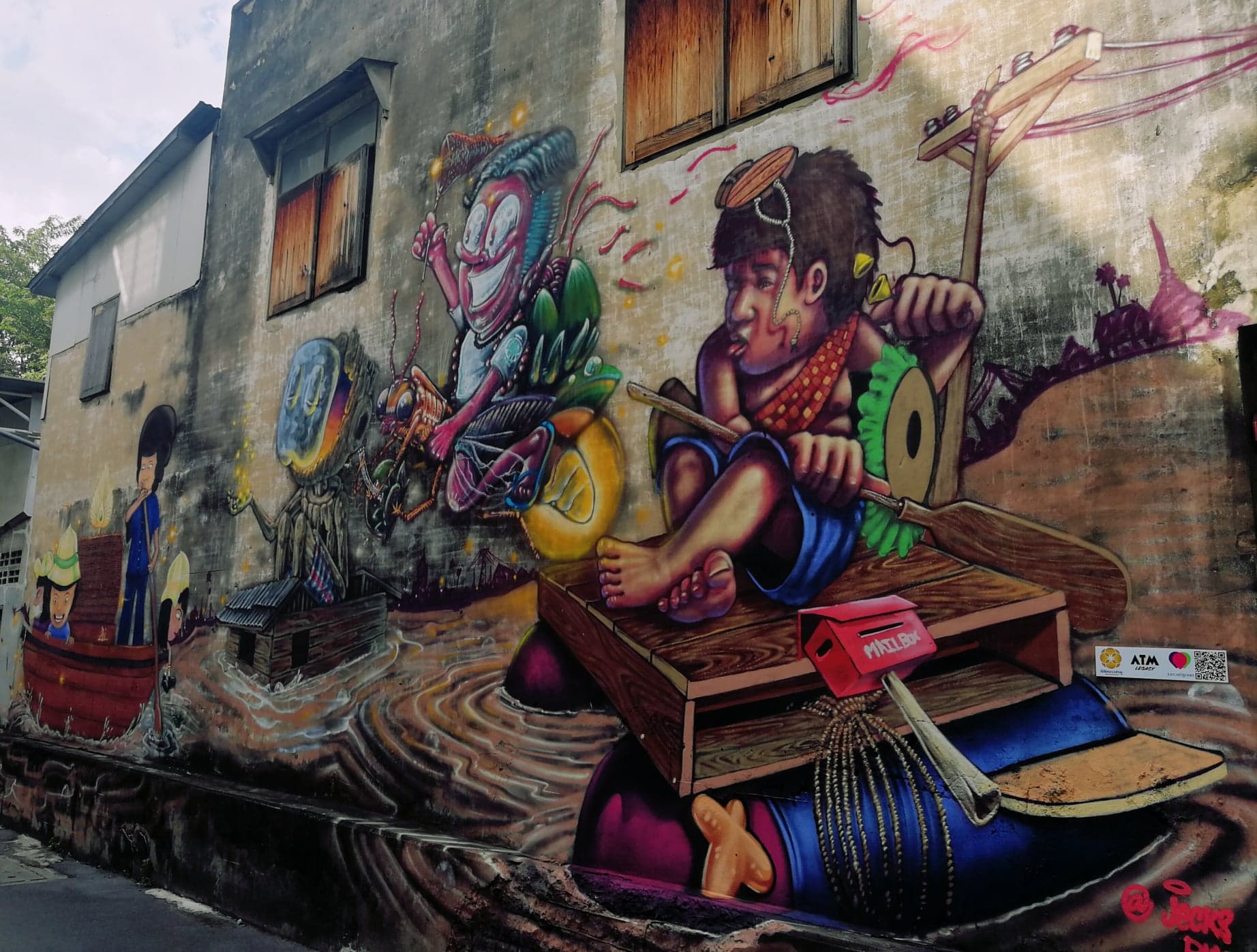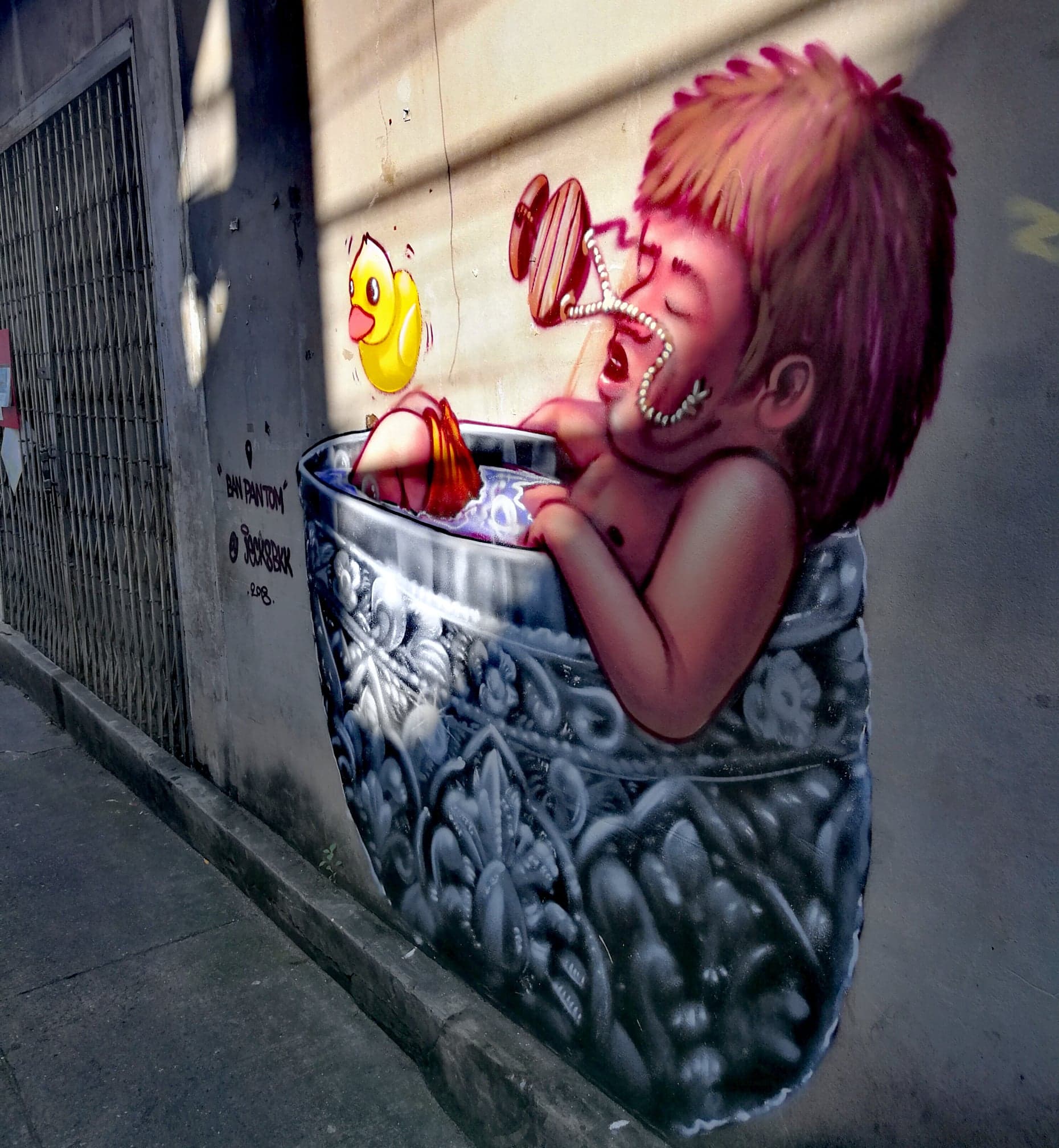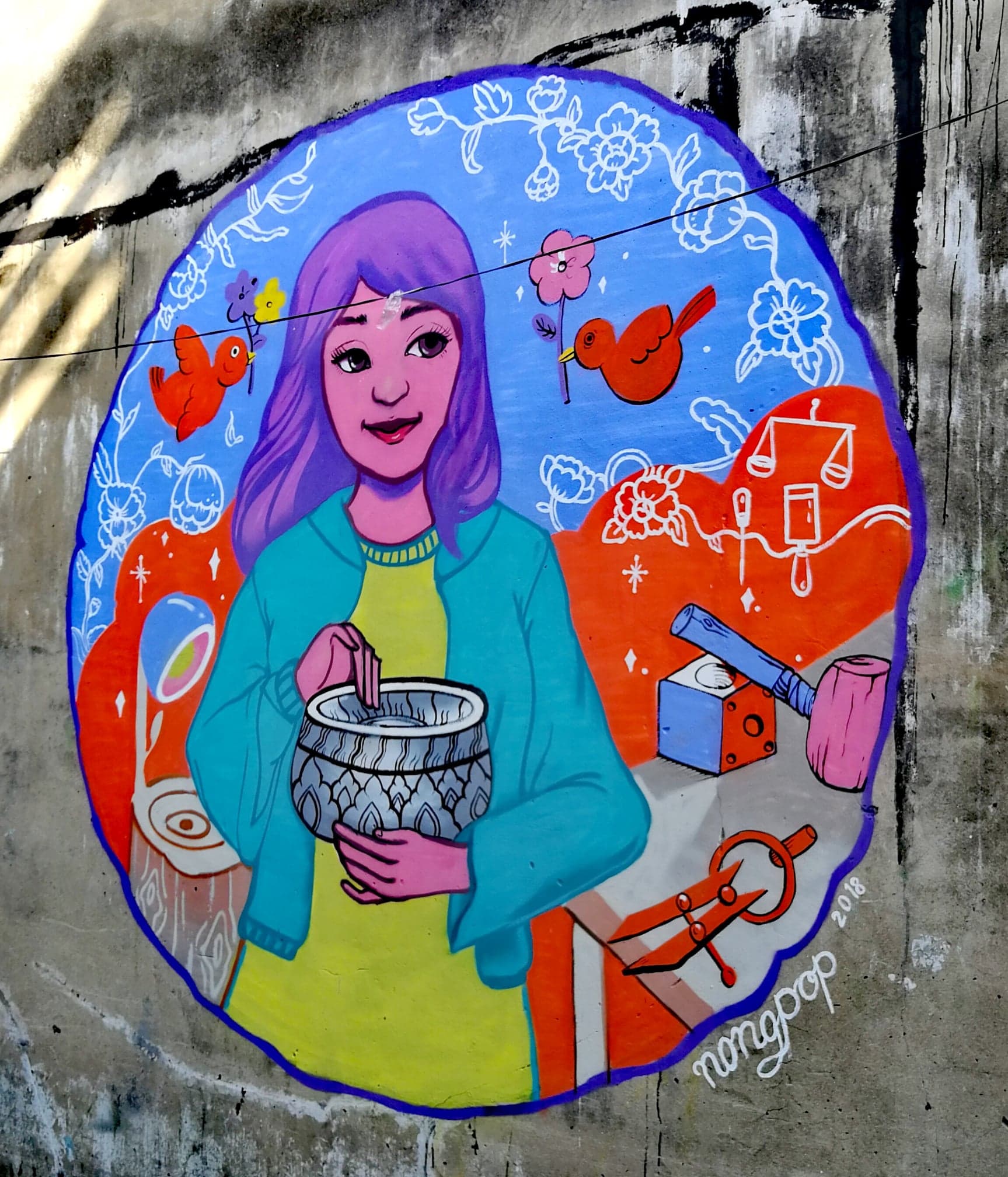The Pipit Banglamphoo Street Art project placed nine murals around old town in neighborhoods not often visited by those who don’t reside there. It’s one of the first such street art initiatives to get government support and funding, something that one of the participating artists, well-known painter Karma Srikogar said, “Never would have happened five years ago. The government would have said ‘hell no’.”
Srikogar went on to explain: “Many of the pieces were designed to reflect an element of the neighborhood they are in: a craft they do, a feature of the place, or the kinds of food that are famous there.”
Her piece, one of her signature colorful discs, has pride of place at the front of the Pipit Banglamphoo museum, one of the sponsors of the project. Others are displayed on nearby neighborhood walls.

The project is all thanks to the hard work of one man, project coordinator Prapop Anantakoon, who works in communications for the treasury department but has a passion for projects that bring attention to old communities.
Coconuts spent an afternoon with Prapop, seeing the murals and learning the backstories.
He has spent the last three months tramping through the back alleys of old town neighborhoods like Wat Sangveswitsayaram, Baan Pan Tom, and Wat Sam Phraya, getting to know people, getting them to trust him, knocking on doors and asking residents to let young artists use their walls, something previously only thought of in this part of the city as vandalism.
He admitted that it wasn’t easy to convince his superiors that the project was a great idea. And to get some government funding and support was even harder. As far as he knows, it’s the first time they’ve supported a purely street art initiative in Bangkok, despite similar projects drawing attention to art and raising city morale in places like New York, London, and many European cities.
However, with this project, attitudes are changing. In fact, one of the pieces, of a beauty queen in front of a local temple, by artist Him HP, has sparked such love from locals that several of them have told Prapop “If I see anyone graffiti over that, I’ll beat him up.”

Toward the end of the project, when local building owners were seeing the finished products, they were volunteering their buildings for future rounds.

Nearby, Sneakarette did two pieces. One features cats at a house famous for their feline pets, and another is around the corner featuring Thai sticky rice desserts wrapped in rice leaves.

That mural sits on a corner where women meet daily to make these desserts before they are whisked away to markets around the city.

Komkrit’s piece sits in a neighborhood by the river famous for crafting the dragon costumes used during Chinese New Year celebrations.

Well-known city muralists and graffiti artists Abi Original, Jecks Bkk, and Dark One Jartown Rga collaborated on a large wall featuring three characters deserting the old Bangkok life lived on a canal since the alley where they painted used to be a pier and they were commenting about Thais abandoning the old way of life lived on the river in the city.

As we pass a grandmother sitting in a doorway, Prapop bows to her and greets her heartily, later explaining that she was the daughter of one of the last of the area — a silversmithing village for generations — silversmiths and that the murals we are about to see were inspired by her.

The murals, by Jecks bkk and Nongpop, represent the silversmithing village. In one, Jecks shows a small boy bathing in the kind of silver bowl the area was best known for crafting. Alongside it, Nongpop has created a version of the granny as a young woman, holding the same bowl and surrounded by the tools used in the trade.
It was the first time that she, a trained artist, had attempted any kind of street art and she feared the locals would not understand, thinking them common vandals. Instead, they loved her work, sitting and watching quietly, bringing her an umbrella and water when it was hot and feeding her at lunchtime. She was deeply touched by their reaction, according to Prapop.

To see the murals, check the map below for locations. If you find any of them, you can scan the QR code on them, which will reveal an app in English and Thai with full history, directions, and backstories about the project. It’s a walk of a few kilometers to see them all, and probably best done in the early morning or late afternoon.
FIND IT:
Pipit Banglamphu Street Art
Start at Pipit Banglamphu Museum and follow the map
The murals will remain up until a force of man or nature obscures them.




Reader Interactions